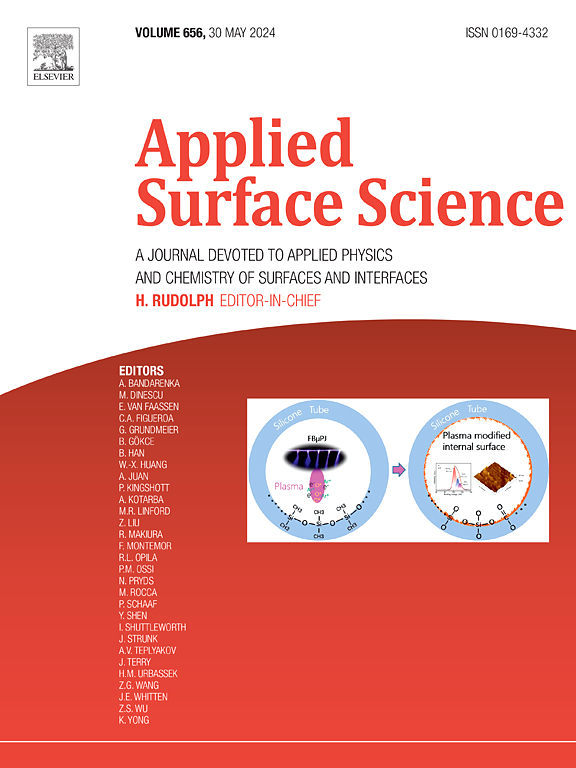Carbon nanotube as catalyst support for monometallic and bimetallic Nanostructures: Unexpectedly high efficiency of supported bimetallic bare metals
IF 6.3
2区 材料科学
Q2 CHEMISTRY, PHYSICAL
引用次数: 0
Abstract
Bimetallic catalysts have emerged as a pivotal innovation in catalysis, offering enhanced activity, selectivity, and stability compared to their monometallic counterparts. Developing simple methods to prepare efficient bimetallic catalysts is currently a major challenge for scientists. Comparison of the catalytic activity of heterogenized monometallic and bimetallic nanocatalysts prepared by immobilizing metalloporphyrins (iron porphyrin and manganese porphyrin) or bare metals (iron chloride and manganese acetate) onto the surface of functionalized multi-walled carbon nanotubes (MWCNT-COOHs) is reported. Supported nanocatalysts are characterized using transmission electron microscopy (TEM), thermogravimetric analysis (TGA), atomic absorption spectroscopy (AAS), and Fourier-transform infrared spectroscopy (FT-IR). The catalytic study focused on the aerobic oxidation of olefins under mild conditions. The role of porphyrin ligand on the catalytic efficiency of the prepared bimetallic heterogenized nanocatalysts was compared with metal salts as well as monometallic catalysts, and the results show higher catalytic activity of bimetallic nanostructures compared to the monometallic catalysts. Although among monometallic nanohybrids, supported metalloporphyrins exhibited much higher efficiency than immobilized bare-metals; unexpectedly, the supported bare-metals show higher (or at least equal) catalytic activity compared to the porphyrin-based nanocatalyst in the case of bimetallic nanostructures. All the prepared nanocatalysts were reusable for at least four catalytic cycles.

碳纳米管作为单金属和双金属纳米结构的催化剂载体:负载双金属裸金属的出乎意料的高效率
双金属催化剂已成为催化领域的关键创新,与单金属催化剂相比,双金属催化剂具有更高的活性、选择性和稳定性。开发简单的方法来制备高效的双金属催化剂是目前科学家面临的主要挑战。比较了金属卟啉(铁卟啉和锰卟啉)和裸金属(氯化铁和醋酸锰)在功能化多壁碳纳米管(MWCNT-COOHs)表面固定制备的单金属和双金属纳米催化剂的催化活性。采用透射电子显微镜(TEM)、热重分析(TGA)、原子吸收光谱(AAS)和傅里叶变换红外光谱(FT-IR)对负载型纳米催化剂进行了表征。对烯烃在温和条件下的好氧氧化进行了催化研究。对比了卟啉配体对制备的双金属异质纳米催化剂催化效率的影响,并与金属盐和单金属催化剂进行了比较,结果表明双金属纳米结构的催化活性高于单金属催化剂。在单金属纳米杂化体中,负载型金属卟啉表现出比固定化裸金属更高的效率;出乎意料的是,在双金属纳米结构的情况下,与基于卟啉的纳米催化剂相比,负载裸金属表现出更高(或至少相等)的催化活性。所有制备的纳米催化剂都可重复使用至少四个催化循环。
本文章由计算机程序翻译,如有差异,请以英文原文为准。
求助全文
约1分钟内获得全文
求助全文
来源期刊

Applied Surface Science
工程技术-材料科学:膜
CiteScore
12.50
自引率
7.50%
发文量
3393
审稿时长
67 days
期刊介绍:
Applied Surface Science covers topics contributing to a better understanding of surfaces, interfaces, nanostructures and their applications. The journal is concerned with scientific research on the atomic and molecular level of material properties determined with specific surface analytical techniques and/or computational methods, as well as the processing of such structures.
 求助内容:
求助内容: 应助结果提醒方式:
应助结果提醒方式:


